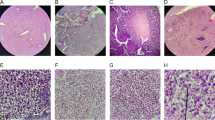Abstract
The yolks of White Leghorn chicken (Gallus domesticus) eggs were injected prior to incubation with either 3,3′,4,4′,5- pentachlorobiphenyl (PCB 126) at doses ranging from 0.1 to 12.8 μg/kg egg or 2,3,7,8-tetrachlorodibenzo-p-dioxin (TCDD) at doses ranging from 0.04 to 0.64 μg/kg egg. Chicks were subjected to necropsy within 24 h of hatching. The brain, bursa, heart, liver, and spleen were removed and weighed. Assessment of the rate of hatching indicated an LD50±S.E. of 2.3±0.19 μg/kg egg (7.1±0.58 nmol/kg egg) for PCB 126 and 0.15±0.012 μg/kg egg (0.47±0.037 nmol/kg egg) for TCDD. No significant differences in the incidence of developmental abnormalities (structural defects and edema) were observed in TCDD-exposed embryos, while PCB 126 caused significantly more developmental abnormalities at 3.2, 6.4, and 12.8 μg/kg egg than the vehicle control. PCB 126 caused lower hatchling weights and greater relative brain, heart, and liver weights when compared to the vehicle control group at a dose of 3.2 μg/kg egg which is greater than the LD50. TCDD at 0.08 μg/kg egg caused relative bursa weights to be less than those of the vehicle control. A toxic equivalency factor (TEF) of 0.07 was determined for PCB 126 in relation to TCDD based on overt lethality.
Similar content being viewed by others
References
Allred PM, Strange JR (1977) The effects of 2,4,5- trichlorophenoxyacetic acid and 2,3,7,8-tetrachlorodibenzo-p-dioxin on developing chicken embryos. Arch Environ Contam Toxicol 6:483–489
Bosveld ATC, Van den Berg M, Theelen RMC (1992) Assessment of the EROD inducing potency of eleven 2,3,7,8-substituted PCDD/Fs and three coplanar PCBs in the chick embryo. Chemosphere 25:911–916
Brunström B (1988) Sensitivity of embryos from duck, goose, herring gull, and various breeds to 3,3′,4,4′-tetrachlorobiphenyl. Poult Sci 67:52–57
— (1989) Toxicity of coplanar polychlorinated biphenyls in avian embryos. Chemosphere 19:765–768
— (1990) Mono-ortho-chlorobiphenyls: toxicity and induction of 7-ethoxyresorufin O-deethylase (EROD) activity in chick embryos. Arch Toxicol 63:188–192
— (1991) Toxicity and EROD-inducing potency of polychlorinated biphenyls (PCBs) and polycyclic aromatic hydrocarbons (PAHs) in avian embryos. Comp Biochem Physiol 100:241–243
Brunström B, Andersson L (1988) Toxicity and 7-ethoxyresorufin O-deethylase-inducing potency of coplanar polychlorinated biphenyls (PCBs) in chick embryos. Arch Toxicol 62:263–266
Brunström B, Darnerud PO (1983) Toxicity and distribution in chick embryos of 3,3′,4,4′-tetrachlorobiphenyl injected into eggs. Toxicology 27:103–110
Brunström B, Örberg J (1982) A method for studying embryotoxicity of lipophilic substances experimentally introduced into hens' eggs. Ambio 11:209–211
Brunström B, Broman D, Näf C (1990) Embryotoxicity of polycyclic aromatic hydrocarbons (PAHs) in three domestic avian species, and of PAHs and coplanar polychlorinated biphenyls (PCBs) in common eider. Environ Pollut 67:133–143
Cecil HC, Harris SJ, Bitman J (1978) Liver mixed function oxidases in chicken: induction by polychlorinated biphenyls and lack of induction by DDT. Arch Environ Contam Toxicol 7:283–290
Cheung MO, Gilbert EF, Peterson RE (1981) Cardiovascular teratogenicity of 2,3,7,8-tetrachlorodibenzo-p-dioxin in the chick embryo. Toxicol Appl Pharmacol 61:197–204
Flick DF, Douglass CD, Gallo L (1963) Studies of chick edema disease. Poult Sci 42:855–862
Giesy JP, Ludwig JP, Tillitt DE (1994) Dioxins, dibenzofurans, PCBs and colonial, fish-eating water birds. In: Schecter A (ed) Dioxins and Health. Plenum Press, NY. pp 249–307
Harris SJ, Cecil HC, Bitman J, Lille RJ (1976) Antibody response and reduction in bursa of Fabricius and spleen weights of progeny of chickens fed PCBs. Poult Sci 55:1933–1940
Henshel DS (1993) LD50 and teratogenicity studies of the effects of TCDD on chicken embryos. Soc Environ Toxicol Chem Abstr 14:280
McCune EL, Savage JE, O'Dell BL (1962) Hydropericardium and ascites in chicks fed a chlorinated hydrocarbon. Poult Sci 41:295–299
Nikolaidis E, Brunström B, Dencker L, Veromaa T (1990) TCDD inhibits the support of B-cell development by the bursa of Fabricius. Pharmacol Toxicol 67:22–26
Nikolaidis E, Brunström B, Dencker L (1988) Effects of TCDD congeners 3,3′,4,4′-tetrachlorobiphenyl and 3,3′,4,4′-tetrachloroazoxybenzene on lymphoid development of the bursa of Fabricius of the chick embryo. Toxicol Appl Pharmacol 92:315–323
North, MO (1978) Commercial Chicken Production Manual. AVI Publishing Company, Westport, CT, 692 pp
Powell DC, Aulerich RJ, Stromborg KL, Bursian SJ (1996) The effects of 3,3′,4,4′-tetrachlorobiphenyl, 2,3,3′,4,4′-pentachlorobiphenyl, and 3,3′,4,4′,5-pentachlorobiphenyl on the developing chicken embryo when injected prior to incubation. Toxicol Environ Health (in press)
Safe S (1987) Determination of 2,3,7,8-TCDD toxic equivalent factors (TEFs): support for the use of the in vitro AHH induction assay. Chemosphere 16:791–802
— (1990) Polychlorinated biphenyls (PCBs), dibenzo-p-dioxins, and related compounds: Environmental and mechanistic considerations which support the development of toxic equivalency factors (TEFs). Crit Rev Toxicol 21:51–88
Sanderson JT, Bellward GD (1995) Hepatic microsomal ethoxyresorufin-O-deethylase-inducing potency in ovo and cytosolic Ah receptor binding affinity of 2,3,7,8-tetrachlorodibenzo-p-dioxin:comparison of four avian species. Toxicol Appl Pharmacol 132:131–145
SAS Institute Inc (1990) SAS/STAT User's Guide, Version 6, 4th ed. SAS Institute Inc, Cary, NC. 1686 pp
Verrett MJ (1976) Investigation of the toxic and teratogenic effects of halogenated dibenzo-p-dioxins and dibenzofurans in the developing chicken embryo. Memo Rept, U.S. Food and Drug Admin, Washington, DC, 14 pp
Yamashita N, Tanabe S, Ludwig JP, Kurita H, Ludwig ME, Tatsukawa R (1993) Embryonic abnormalities and organochlorine contamination in double-crested cormorants (Phalacrocorax auritus) and caspian terns (Hydroprogne caspia) from the upper Great Lakes in 1988. Environ Pollut 79:163–173
Yao C, Panigrahy B, Safe S (1990) Utilization of cultured chick embryo hepatocytes as in vitro bioassays for polychlorinated biphenyls (PCBs): quantitative structure-induction relationships. Chemosphere 21:1007–1016
Author information
Authors and Affiliations
Rights and permissions
About this article
Cite this article
Powell, D.C., Aulerich, R.J., Meadows, J.C. et al. Effects of 3,3′,4,4′,5-pentachlorobiphenyl (PCB 126) and 2,3,7,8-tetrachlorodibenzo-p-dioxin (TCDD) injected into the yolks of chicken (Gallus domesticus) eggs prior to incubation. Arch. Environ. Contam. Toxicol. 31, 404–409 (1996). https://doi.org/10.1007/BF00212680
Received:
Revised:
Issue Date:
DOI: https://doi.org/10.1007/BF00212680




